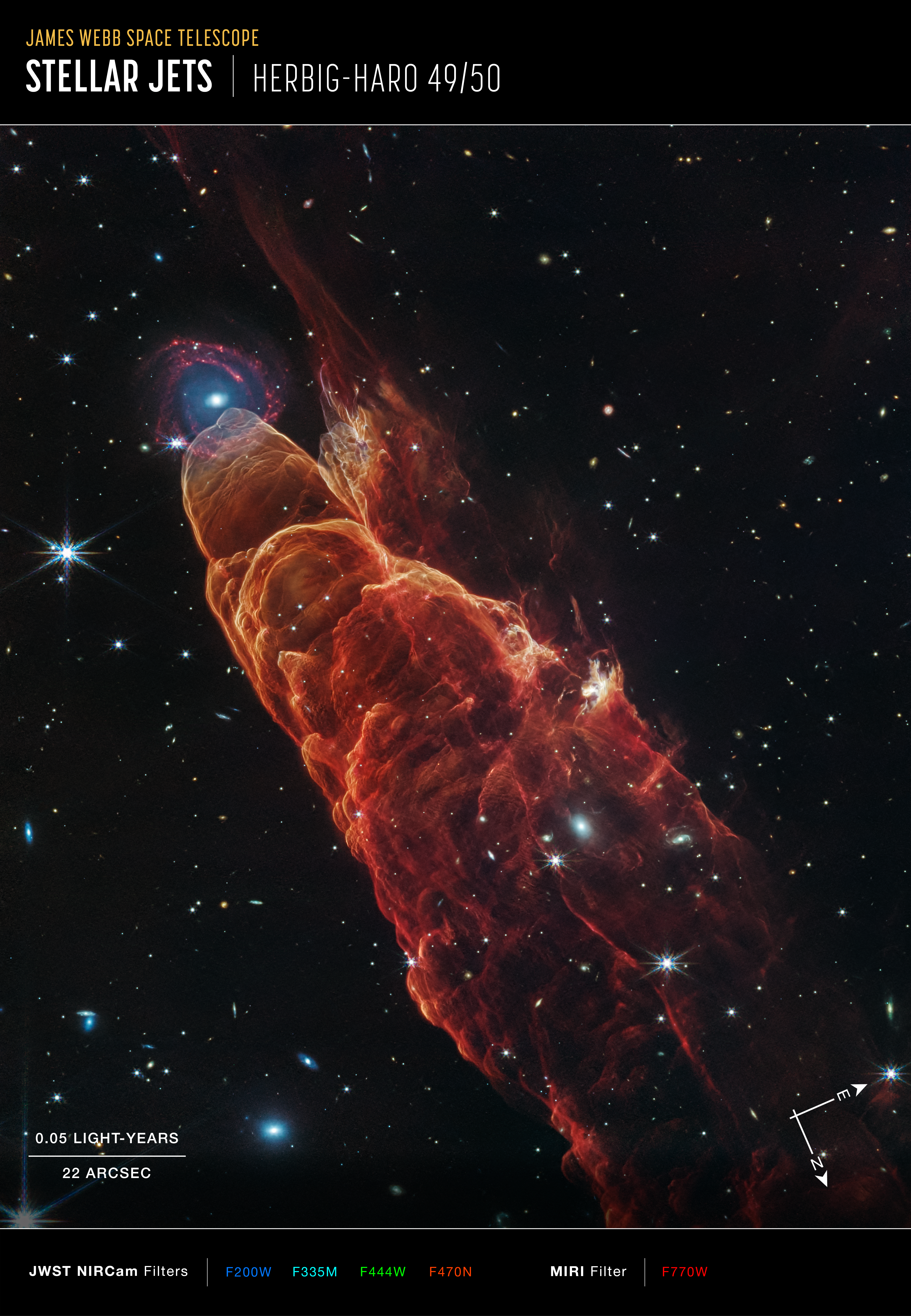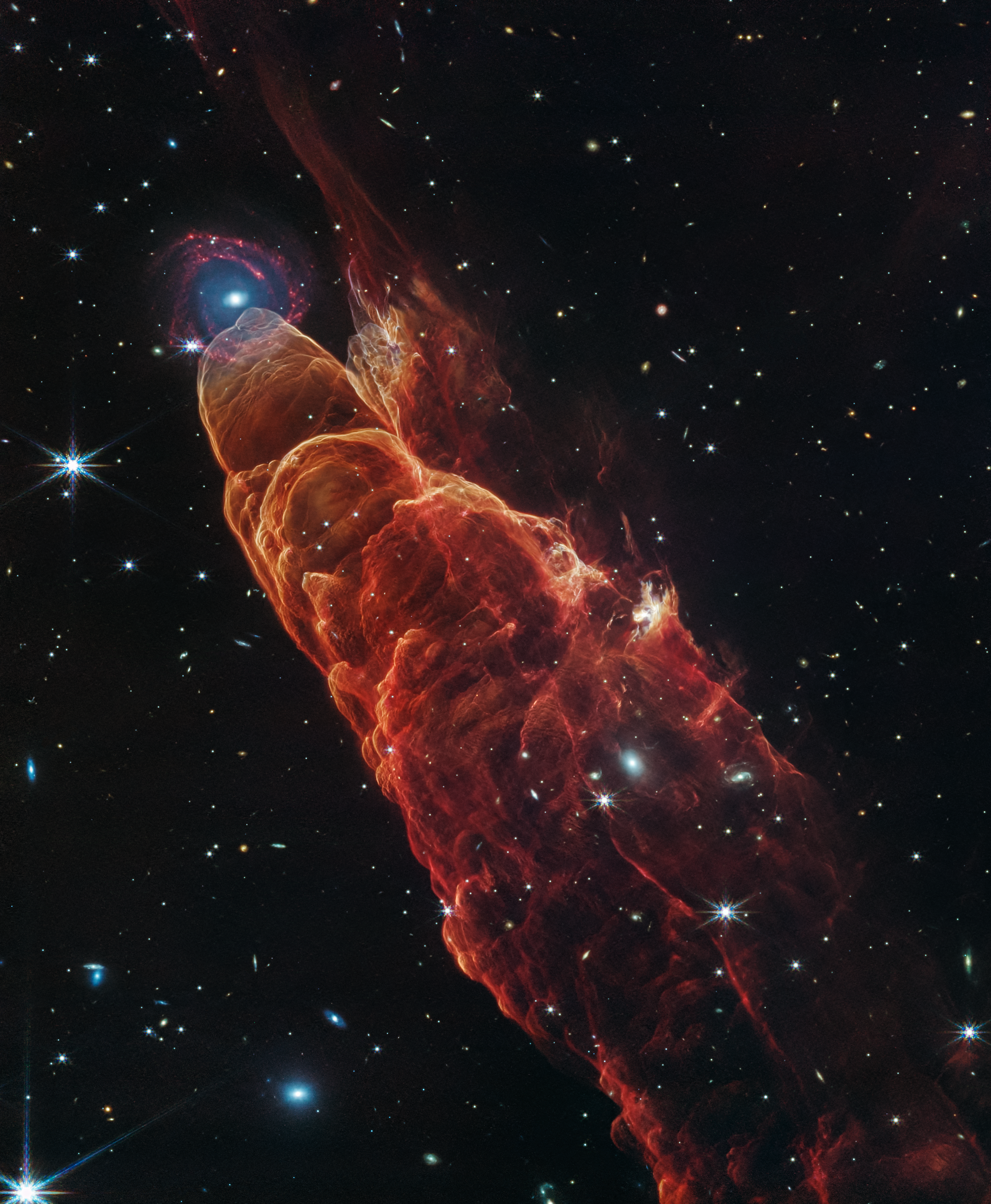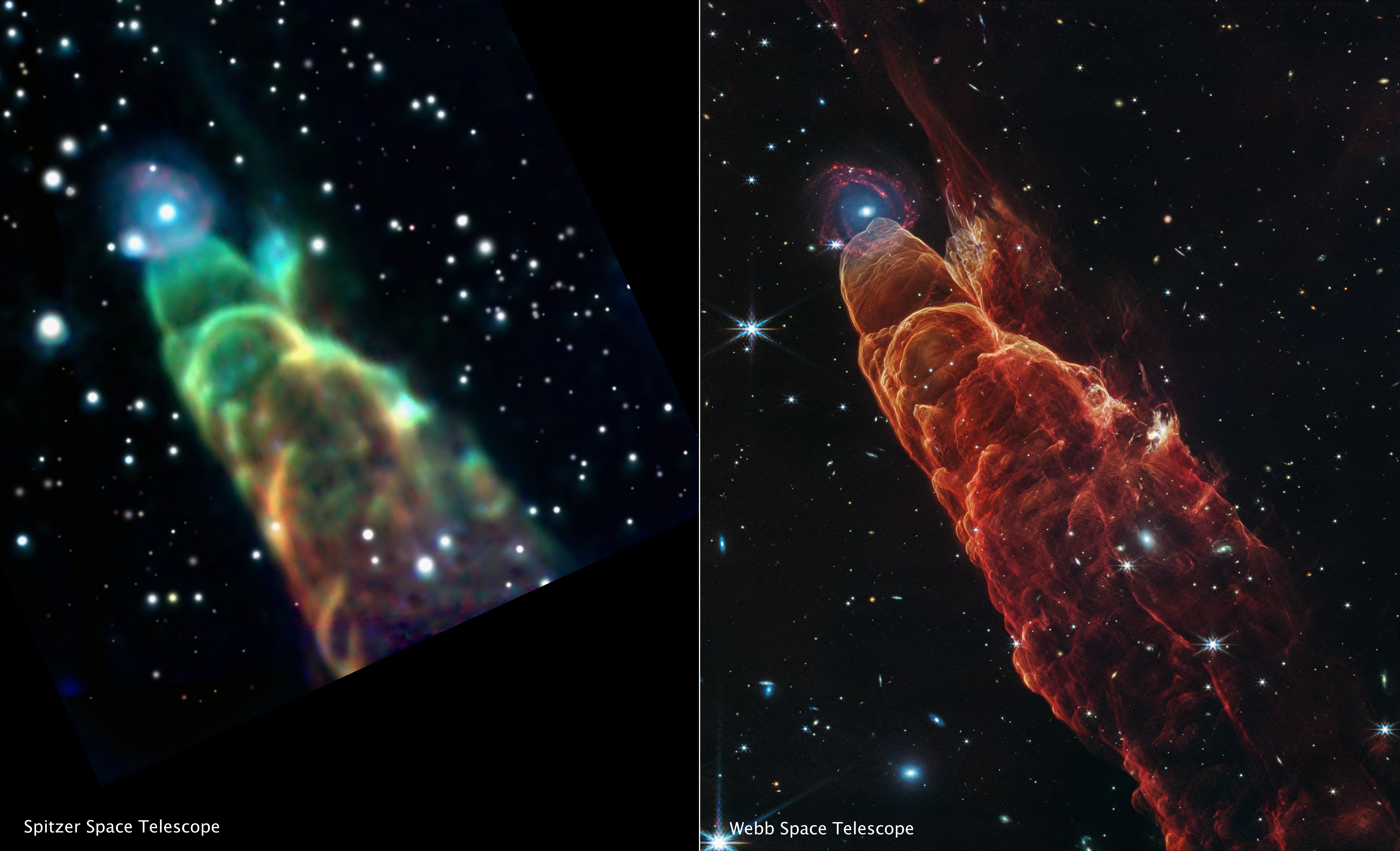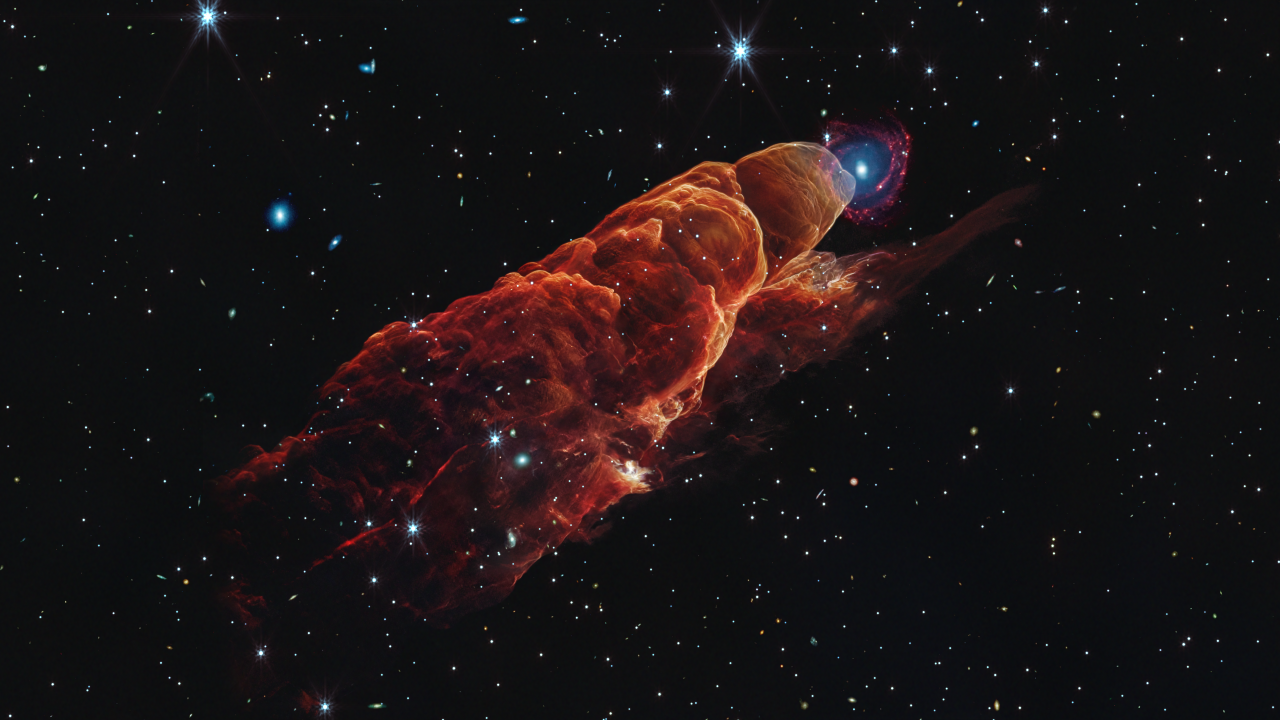1 min read
Herbig-Haro 49/50 (NIRCam and MIRI Compass Image)

This image of Herbig-Haro 49/50, captured by the James Webb Space Telescope’s NIRCam (Near-Infrared Camera) and MIRI (Mid-Infrared Instrument), shows compass arrows, scale bar, and color key for reference.
The north and east compass arrows show the orientation of the image on the sky. Note that the relationship between north and east on the sky (as seen from below) is flipped relative to direction arrows on a map of the ground (as seen from above).
The scale bar is labeled in light-years, which is the distance that light travels in one Earth-year. (It takes 0.05 years (or about 18 days) for light to travel a distance equal to the length of the scale bar.) One light-year is equal to about 5.88 trillion miles or 9.46 trillion kilometers.
The scale bar is also labeled in arcseconds, which is a measure of angular distance on the sky. One arcsecond is equal an angular measurement of 1/3600 of one degree. There are 60 arcminutes in a degree and 60 arcseconds in an arcminute. (The full Moon has an angular diameter of about 30 arcminutes.) The actual size of an object that covers one arcsecond on the sky depends on its distance from the telescope.
This image shows invisible near- and mid-infrared wavelengths of light that have been translated into visible-light colors. The color key shows which NIRCam and MIRI filters were used when collecting the light. The color of each filter name is the visible light color used to represent the infrared light that passes through that filter.
Read a full description of the image.
About the Object
- R.A. PositionR.A. PositionRight ascension – analogous to longitude – is one component of an object's position.11:05:56.2
- Dec. PositionDec. PositionDeclination – analogous to latitude – is one component of an object's position.-77:33:31.7
- ConstellationConstellationOne of 88 recognized regions of the celestial sphere in which the object appears.Chamaeleon
- DistanceDistanceThe physical distance from Earth to the astronomical object. Distances within our solar system are usually measured in Astronomical Units (AU). Distances between stars are usually measured in light-years. Interstellar distances can also be measured in parsecs.625 light-years
- DimensionsDimensionsThe physical size of the object or the apparent angle it subtends on the sky.Image is 2.13 arcmin across (about 0.3 light-years)
About the Data
- Data DescriptionData DescriptionProposal: A description of the observations, their scientific justification, and the links to the data available in the science archive.
Science Team: The astronomers who planned the observations and analyzed the data. "PI" refers to the Principal Investigator.This image was created with Webb data from proposal: 6558 (M. Garcia Marin). Image processing: Joseph DePasquale (STScI).
- InstrumentInstrumentThe science instrument used to produce the data.NIRCam, MIRI
- Exposure DatesExposure DatesThe date(s) that the telescope made its observations and the total exposure time.06 August 2024
- FiltersFiltersThe camera filters that were used in the science observations.NIRCam: F200W, F335M, F444W, F470N; MIRI: F770W
- Object NameObject NameA name or catalog number that astronomers use to identify an astronomical object.Herbig-Haro 49/50, HH 49/50
- Object DescriptionObject DescriptionThe type of astronomical object.Stellar Jets
- Release DateMarch 24, 2025
- Science ReleaseNASA’s Webb Telescope Unmasks True Nature of the Cosmic Tornado
- CreditImage: NASA, ESA, CSA, STScI

These images are a composite of separate exposures acquired by the James Webb Space Telescope using the NIRCam and MIRI instruments. Several filters were used to sample specific wavelength ranges. The color results from assigning different hues (colors) to each monochromatic (grayscale) image associated with an individual filter. In this case, the assigned colors are: Red: F770W, Orange: F470N, Green: F444W, Cyan: F335M, Blue: F200W
Related Images & Videos

Herbig-Haro 49/50 (NIRCam and MIRI Image)
NASA’s James Webb Space Telescope observed Herbig-Haro 49/50, an outflow from a nearby still-forming star, in high-resolution near- and mid-infrared light. The young star is off to the lower right corner of the Webb image.Intricate features of the outflow, represented in...

Herbig-Haro 49/50 (Spitzer and Webb Images)
This side-by-side comparison shows a Spitzer Space Telescope image of HH 49/50 (left) versus a Webb image of the same object (right) using the NIRCam (Near-infrared Camera) instrument and MIRI (Mid-infrared Instrument). The Webb image shows intricate details of the heated gas...

Herbig-Haro 49/50 Stellar Jets
This visualization examines the three-dimensional structure of Herbig-Haro 49/50 (HH 49/50) as seen in near- and mid-infrared light by the James Webb Space Telescope. HH 49/50 is an outflow produced by the jet of a nearby still-forming star in the Chamaeleon I Cloud complex, one...
Share
Details
Laura Betz
NASA’s Goddard Space Flight Center
Greenbelt, Maryland
laura.e.betz@nasa.gov
NASA, ESA, CSA, STScI































